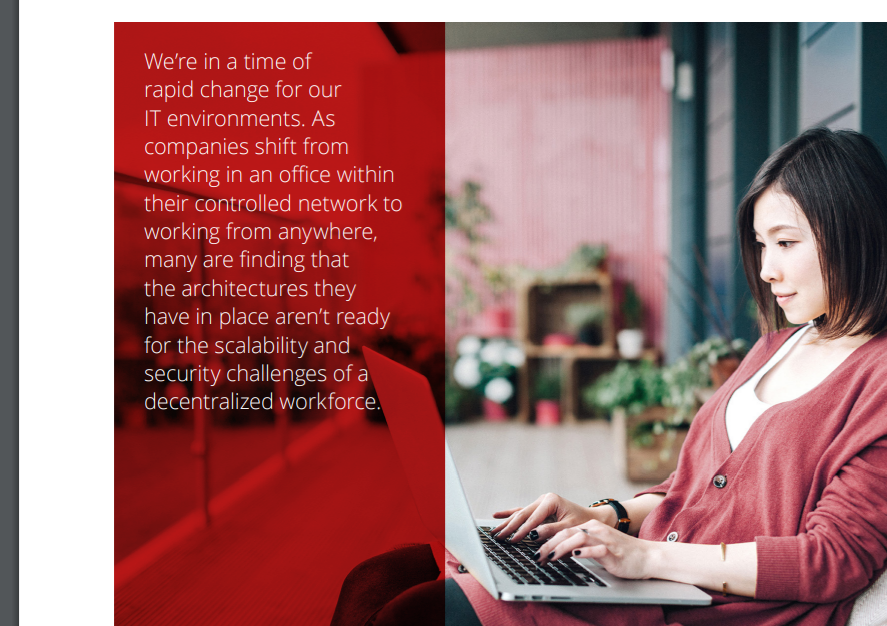Two forces have arisen like a hot wind from the desert to forever change product development. Constant innovation and digitalized processes are not trends or phases: They are the new normal. Every manufactured “thing,” from Crock-Pots to tractors, are expected to be programmable, responsive and connected.
Design and engineering techniques known as design thinking made these twin forces possible; companies looking for an edge over the competition have pursued design thinking strategies. In recent years such varied firms as consultancy McKinsey & Company and IBM have made appointments at their most senior levels for designers. The fast rise of mobile apps as the front end of services (rides, rentals, food delivery, consultants and more) largely came about because of design thinking.
Design and engineering techniques known as design thinking made these twin forces possible; companies looking for an edge over the competition have pursued design thinking strategies. In recent years such varied firms as consultancy McKinsey & Company and IBM have made appointments at their most senior levels for designers. The fast rise of mobile apps as the front end of services (rides, rentals, food delivery, consultants and more) largely came about because of design thinking.
Other topic:
- Generative Design Could Radically Transform the Look of Our World
- Viet Net Run-Rate Promotion
- [SEMINAR INVITATION: ENHANCE CONNECTIVITY, AVAILABILITY & SECURITY TO SECURE FOR YOUR BRANCH TRANSFORMATION ]
App design and performance was given an elevated role in these new app-first companies. Instead of being the first step in a linear process, design thinking became the central operational strategy and an essential part of the business model. Books such as “Rise of the DEO (Design Executive Officer): Leadership by Design” by Maria Giudice and Christopher Ireland and “Don’t Make Me Think” by Steve Krug explain how user experience is not just a way to make software easier to use. It is at the heart of an entirely new way to organize product development processes.
But such promotion of design thinking as an organizational imperative has, for the most part, not become mainstream. Design thinking has stayed hidden away, locked inside the proverbial silos of corporate culture. Such companies should be worried, says Giudice, now vice president for Experience Design at Autodesk.“Design thinking is really design strategy,” says Giudice. Design has not changed over the years, she says; it has always been strategic. “Companies were built on the backbone of technology and engineering acumen.”But companies have not been thinking about it strategically. Giudice believes the iPhone represents a “pinnacle moment,” when product development became about user experience more than the technology. “Apple turned the world on its head; Nokia and the others were left in the dust. It was intuitive, easy to learn; it all pointed to user experience.”As iPhone sales soared, technology companies realized the value of designing for customer experience and making user experience a key value in articulating a product’s business model. Product companies started hiring more designers, and in some cases acquiring design firms. Facebook acquired Hot Studio, Giudice’s design studio, specifically for the design talent. “There was a huge focus on customer experience,” Giudice says. “Today, people look at Facebook as well designed, but in 2013 it was a user experience nightmare.”Making Complex Products Easier to UseDepending on who you ask, design thinking is either a cutting-edge recognition of a holistic approach to product development or a movement that is changing business models as well as specific products.
“Products are fundamentally getting harder; there are a lot more dots to connect,” says Chris Cheung, founder of Mighty Dynamo. Best known for his product development work on the Alias Wavefront line of automotive design tools and then Autodesk Sketchbook Pro, Cheung is a champion for the emerging recognition of design thinking as a business model.
“Industrial design is getting more complicated. Today, user experience and consumer engagement transcend physical design parameters,” Cheung says.
Digitalized products and connectivity requirements require multiple tracks of product design working side by side with traditional industrial design and physical engineering. Constant customer feedback and onboard sensors mean designers are no longer cut off from end-user reaction and product usage data. The linear product development process is too slow to absorb all this new information, Cheung says. But the cyclical, iterative nature of design thinking offers a new way forward.
“The cyclical nature is important; [decision] gates become points of validation. This is missing in other process definitions that tend to be more linear, the ideate-iterate-design-develop-ship model.”
Cheung argues an “adaptive mentality” must be embraced at all levels and divisions of product organizations. “Industries are increasingly disrupted by progress; fewer and fewer products are immune.” Consumers are too willing to shift spending patterns and adopt new products and new ideas. “Design thinking, from a business perspective, must mirror how product teams work.”
Cheung believes management needs to embrace the iterative processes of design “across the board. It takes discipline to really follow it.” If testing does not yield the best result, the company has to do another round of design until they get it right. “Sometimes you have to go all the way back to the definition of the problem.”
Breaking Paradigms
Sometimes design thinking will push companies to change or even reject long-held methods. Onshape co-founder John McEleney recounts how designer Steven Krug, mentioned earlier, was influential at McEleney’s previous CAD startup SolidWorks. Most software companies do focus group testing, where users are watched from a distance to see how they use new features. Krug insisted they sit with an engineer using an existing CAD product and talk through processes before designing the user interface. It was this shift in thinking that led SolidWorks to develop the first Feature Manager tool, now common in MCAD products.
Today, Onshape is still following Krug’s advice. To test ideas, they give a user a task but stay with them to explore ideas and note where the user might experience blockages or offer a better method.
“We try to do the design thinking ahead of the user,” notes McEleney.
Onshape uses the Agile method of software development, which practices daily staff “stand-ups” where everyone shares current work, and three-week development cycles between product updates. McEleney says Agile is not just for software companies, but also for companies making physical products; Onshape encourages its users to adopt Agile methods. “The challenges are the same in software and physical products,” says McEleney. Companies now have multiple work groups in multiple locations, and face increased pressure to get great products to market quickly. “Traditional processes are too rigid and slow.”
McEleney uses an example from fashion to prove his point about Agile product development. Traditional fashion design had a team of designers create a line of products that would move from the drawing boards (literally) to the stores in about a year; the clothing line would be what stores carried until the next fashion season arrived. Upstart fashion design house Zara saw an opportunity, and delivered product in weeks, with intentional limited production runs to encourage consumer excitement and return shopping. Sales representatives were encouraged to report what customers liked and wanted from the fashion house. “The Zara business model is rapid design iteration,” McEleney notes. Everything they do as a company is based on this Agile form of fashion design.
McEleney believes that product development can take better advantage of digital technology, making such Agile notions as constant customer feedback part of the business model. One Onshape customer builds custom workbenches. A regular client needed a workbench that hadn’t been built for 10 years. Photos and old invoices were uploaded as part of their Onshape design environment and used to create the “new” workbench. “They create a 360-degree record of the process, all in the design environment.”
Typical “waterfall” development methods don’t work well with such integration of customer intent and designer response, says McEleney. He says it is one reason that Onshape made it easy to “fork” designs with multiple options that stay connected, so that design teams can pursue options and quickly integrate the best solutions back into the final model.
Giudice echoes McEleney’s views on bringing design thinking into the business model. “Business models must be based in customer wants, needs and desires. It requires understanding (of) how to delight the customer,” says Giudice. “If you don’t use design strategies like Agile, you might not be headed in the right direction.” In firms that embrace design thinking as strategic, design is now a competitive differentiator. “In a world of three, four or five choices, who wins in the market?” asks Giudice. “The product that feels best, the one that removes the friction. This is where design becomes strategic in business.”
Giudice believes the trend of moving simulation earlier into design is a result of being strategic about design thinking. Instead of delivering a document with design variables and creating a prototype to test the ideas, “now design and simulation and testing are in real time,” she says. “There is immediate feedback.”
Design Rooted in Real-Time Experience
Dassault Systemès refers to its current generation of CAD, PLM and related products as the 3D EXPERIENCE platform. Valerie Pegon, experience designer & innovation strategist at Dassault, says it is the result of recognizing three “top-level challenges” where design thinking—which Pegon calls “experience thinking”—affects product development.
The first challenge is company agility. Pegon says agility remains complex for non-software industries. “Imagine, as a designer, being able to simulate your design right away, in real time. Or being able to test virtual experiences quickly.”
The second challenge is responding to the Internet of Things. “Sensing and data analytics enable a continuous feedback loop to improve new designs, to adapt in real time.” Connected objects can enable new services and rewrite business models.
The third challenge is harnessing social systems to inform design. Digitalization means many products are becoming ecosystems, Pegon says. “Building these ecosystems requires some level of structure to work smoothly, a high level of flexibility and a deep connection to the context and usage.”
Source: Autodesk
Các kênh thông tin khác của Việt Nét:
Email: sales@vietnetco.vn
Hotline: 1900 6736
Website: https://vietnetco.vn
Fanpage: www.facebook.com/VietNet.Distribution/
Youtube: https://youtu.be/EYKRcxuZdgQ
But such promotion of design thinking as an organizational imperative has, for the most part, not become mainstream. Design thinking has stayed hidden away, locked inside the proverbial silos of corporate culture. Such companies should be worried, says Giudice, now vice president for Experience Design at Autodesk.“Design thinking is really design strategy,” says Giudice. Design has not changed over the years, she says; it has always been strategic. “Companies were built on the backbone of technology and engineering acumen.”But companies have not been thinking about it strategically. Giudice believes the iPhone represents a “pinnacle moment,” when product development became about user experience more than the technology. “Apple turned the world on its head; Nokia and the others were left in the dust. It was intuitive, easy to learn; it all pointed to user experience.”As iPhone sales soared, technology companies realized the value of designing for customer experience and making user experience a key value in articulating a product’s business model. Product companies started hiring more designers, and in some cases acquiring design firms. Facebook acquired Hot Studio, Giudice’s design studio, specifically for the design talent. “There was a huge focus on customer experience,” Giudice says. “Today, people look at Facebook as well designed, but in 2013 it was a user experience nightmare.”Making Complex Products Easier to UseDepending on who you ask, design thinking is either a cutting-edge recognition of a holistic approach to product development or a movement that is changing business models as well as specific products.
“Products are fundamentally getting harder; there are a lot more dots to connect,” says Chris Cheung, founder of Mighty Dynamo. Best known for his product development work on the Alias Wavefront line of automotive design tools and then Autodesk Sketchbook Pro, Cheung is a champion for the emerging recognition of design thinking as a business model.
“Industrial design is getting more complicated. Today, user experience and consumer engagement transcend physical design parameters,” Cheung says.
Digitalized products and connectivity requirements require multiple tracks of product design working side by side with traditional industrial design and physical engineering. Constant customer feedback and onboard sensors mean designers are no longer cut off from end-user reaction and product usage data. The linear product development process is too slow to absorb all this new information, Cheung says. But the cyclical, iterative nature of design thinking offers a new way forward.
“The cyclical nature is important; [decision] gates become points of validation. This is missing in other process definitions that tend to be more linear, the ideate-iterate-design-develop-ship model.”
Cheung argues an “adaptive mentality” must be embraced at all levels and divisions of product organizations. “Industries are increasingly disrupted by progress; fewer and fewer products are immune.” Consumers are too willing to shift spending patterns and adopt new products and new ideas. “Design thinking, from a business perspective, must mirror how product teams work.”
Cheung believes management needs to embrace the iterative processes of design “across the board. It takes discipline to really follow it.” If testing does not yield the best result, the company has to do another round of design until they get it right. “Sometimes you have to go all the way back to the definition of the problem.”
Breaking Paradigms
Sometimes design thinking will push companies to change or even reject long-held methods. Onshape co-founder John McEleney recounts how designer Steven Krug, mentioned earlier, was influential at McEleney’s previous CAD startup SolidWorks. Most software companies do focus group testing, where users are watched from a distance to see how they use new features. Krug insisted they sit with an engineer using an existing CAD product and talk through processes before designing the user interface. It was this shift in thinking that led SolidWorks to develop the first Feature Manager tool, now common in MCAD products.
Today, Onshape is still following Krug’s advice. To test ideas, they give a user a task but stay with them to explore ideas and note where the user might experience blockages or offer a better method.
“We try to do the design thinking ahead of the user,” notes McEleney.
Onshape uses the Agile method of software development, which practices daily staff “stand-ups” where everyone shares current work, and three-week development cycles between product updates. McEleney says Agile is not just for software companies, but also for companies making physical products; Onshape encourages its users to adopt Agile methods. “The challenges are the same in software and physical products,” says McEleney. Companies now have multiple work groups in multiple locations, and face increased pressure to get great products to market quickly. “Traditional processes are too rigid and slow.”
McEleney uses an example from fashion to prove his point about Agile product development. Traditional fashion design had a team of designers create a line of products that would move from the drawing boards (literally) to the stores in about a year; the clothing line would be what stores carried until the next fashion season arrived. Upstart fashion design house Zara saw an opportunity, and delivered product in weeks, with intentional limited production runs to encourage consumer excitement and return shopping. Sales representatives were encouraged to report what customers liked and wanted from the fashion house. “The Zara business model is rapid design iteration,” McEleney notes. Everything they do as a company is based on this Agile form of fashion design.
McEleney believes that product development can take better advantage of digital technology, making such Agile notions as constant customer feedback part of the business model. One Onshape customer builds custom workbenches. A regular client needed a workbench that hadn’t been built for 10 years. Photos and old invoices were uploaded as part of their Onshape design environment and used to create the “new” workbench. “They create a 360-degree record of the process, all in the design environment.”
Typical “waterfall” development methods don’t work well with such integration of customer intent and designer response, says McEleney. He says it is one reason that Onshape made it easy to “fork” designs with multiple options that stay connected, so that design teams can pursue options and quickly integrate the best solutions back into the final model.
Giudice echoes McEleney’s views on bringing design thinking into the business model. “Business models must be based in customer wants, needs and desires. It requires understanding (of) how to delight the customer,” says Giudice. “If you don’t use design strategies like Agile, you might not be headed in the right direction.” In firms that embrace design thinking as strategic, design is now a competitive differentiator. “In a world of three, four or five choices, who wins in the market?” asks Giudice. “The product that feels best, the one that removes the friction. This is where design becomes strategic in business.”
Giudice believes the trend of moving simulation earlier into design is a result of being strategic about design thinking. Instead of delivering a document with design variables and creating a prototype to test the ideas, “now design and simulation and testing are in real time,” she says. “There is immediate feedback.”
Design Rooted in Real-Time Experience
Dassault Systemès refers to its current generation of CAD, PLM and related products as the 3D EXPERIENCE platform. Valerie Pegon, experience designer & innovation strategist at Dassault, says it is the result of recognizing three “top-level challenges” where design thinking—which Pegon calls “experience thinking”—affects product development.
The first challenge is company agility. Pegon says agility remains complex for non-software industries. “Imagine, as a designer, being able to simulate your design right away, in real time. Or being able to test virtual experiences quickly.”
The second challenge is responding to the Internet of Things. “Sensing and data analytics enable a continuous feedback loop to improve new designs, to adapt in real time.” Connected objects can enable new services and rewrite business models.
The third challenge is harnessing social systems to inform design. Digitalization means many products are becoming ecosystems, Pegon says. “Building these ecosystems requires some level of structure to work smoothly, a high level of flexibility and a deep connection to the context and usage.”
Source: Autodesk
Các kênh thông tin khác của Việt Nét:
Email: sales@vietnetco.vn
Hotline: 1900 6736
Website: https://vietnetco.vn
Fanpage: www.facebook.com/VietNet.Distribution/
Youtube: https://youtu.be/EYKRcxuZdgQ



